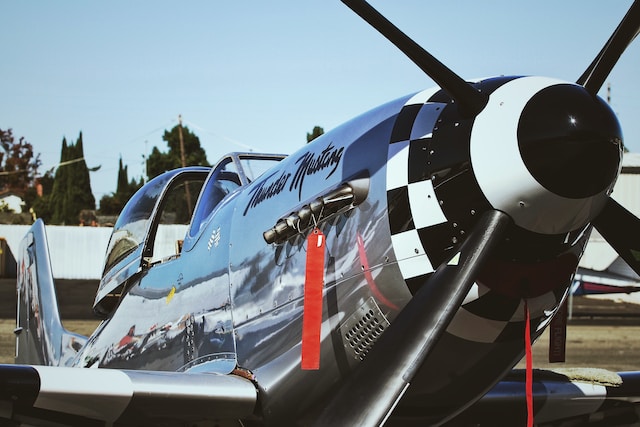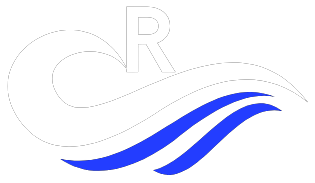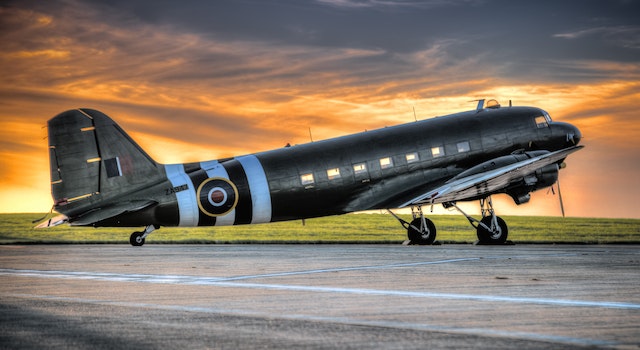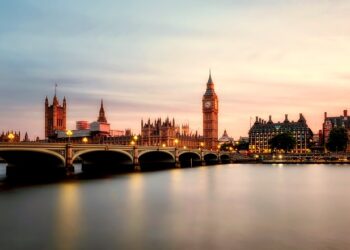How Can A Military Airport Be Identified At Night?
To determine if a military airport is operational at night, look for a rotating beacon that has two flashes of light that alternate with the green flash. The beacon is operational from dusk to dawn unless weather conditions are bad and visibility is reduced, in which case it could be used more frequently.
What Is The Best Way To Ensure That A Military Airport Is Recognized?
We will explore the many methods and techniques that are used to identify military airports. Military airports play an essential part in the defense of our nation and are usually shrouded in a veil of secrecy. However, through attentive analysis and observation, certain aspects can help distinguish an airport that is a military one from its non-military counterparts. When you are aware of these characteristics, you will be able to recognize and distinguish military airports with certainty.
Location and Surroundings
One of the main things to be considered when determining the military airport is the place of operation. The military airports are strategically located close to military installations or bases. They are usually chosen because of their proximity to significant military installations, training facilities, and logistical facilities. Furthermore, these airports are often protected by restricted access areas, high-security fencing, and warning signs to indicate restricted access.
Runway Length and Design
The length and design of the runway could reveal valuable information about whether the airport is a civilian or military airport. Aircraft that are military, like transport planes and fighter jets, have runways that are longer in comparison with commercial aircraft. They are also typically equipped with strengthened surfaces that are able to handle larger aircraft as well as advanced land gears. So, if you see an airport with a particularly long runway or runway designs, it could be a sign of a military airport.
Aircraft Types and Activities
The various types of aircraft as well as their movements at an airport could be a clear indication of its military character. Airports that are military often house an array of military aircraft, such as bombers, fighter jets, cargo helicopters, and planes. They may sport distinctive camouflage designs, markings, or military emblems. In addition, military airports often participate in air shows and military drills, which are visible from vantage points nearby.
Radar Installations and Air Traffic Control
Military airports depend on sophisticated radar systems and advanced air traffic control systems to ensure security and safety for their activities. They may have radar towers, surveillance cameras, and communications antennas. They’re usually built to manage military-specific procedures such as rapid takeoffs, landings, and aerial refueling procedures. It is possible to detect radar installations or aircraft traffic control systems that may reveal crucial clues to the military character of the airport.
Security Measures and Facilities
Security measures are essential at military airports. They are outfitted with strict access controls, surveillance systems, and extensive security procedures. Military airports typically have secured gates, along with security checkpoints and restricted zones. It is not unusual to see military security personnel, guards with guns, and military police manning the area. Security measures are put in place to protect sensitive military assets and ensure the security of the operation.
Satellite Imagery and Online Resources
The advancement in technology has made it easier to locate military airports by using satellite imagery and other online resources. Satellite imagery services such as Google Earth provide high-resolution views of airports around the world. When looking at these images, you can spot military-specific elements like hangars for aircraft shelters that are hardened, as well as storage spaces for military equipment. In addition, online sources, databases on military aviation, and government websites typically provide valuable information and photos that can assist in identifying military airports.
How Can A Land Airport Seesaw At Night?
Authorities in aviation worldwide place a lot of importance on ensuring the highest standards of safety in nighttime operations. The most crucial aspect is the recognition and efficient lighting of airports on land. A land airport that is lit is crucial in helping pilots navigate and then land their aircraft in dark conditions. With clear visual indicators and references, the lighting systems guarantee the safety of pilots and minimize the risks that come with low visibility.
The Importance of Lighting Systems
Runway Lighting
One of the primary factors that determines a well-lit runway in the evening is the runway lighting system. These lights are strategically placed around the edges and in the middle of the runway. They provide crucial guidance to pilots on takeoff as well as landing and taxiing. They are constructed to be very visible, which allows pilots to see clearly the runway’s dimensions and alignment as well as any obstructions that could be.
The lighting system for runways consists of different types of lighting, each with a particular purpose. They include:
- Threshold Lights: located at the point where the runway begins, the threshold lights assist pilots in locating the runway’s start point.
- Edge Lights: Set on the edges of runways, the edge lights define the runway’s boundaries. They also aid in ensuring that the runway is aligned correctly for landing and takeoff.
- Centerline Lights: Located on the centerline of the runway, the centerline lights help pilots maintain the plane’s position during landing.
- Touchdown Zone Lights: The lights, which are located near the start of the runway, show the zone of touchdown and assist pilots in making adjustments to their approach.
Taxiway Lighting
In addition to lighting for the runway, taxiway lighting is an important aspect of identifying the airport’s lighting at night. Taxiway lights serve to define the pathways that connect the runway with other airport areas like hangars, terminals, or maintenance facilities. These lights play a crucial role in preventing aircraft from wandering off the track and crashing into obstructions and other airplanes.
Taxiway lights are typically blue in hue, ensuring the ability to clearly distinguish them from runway lights. They are located on the edges of the taxiway. They can be enhanced with other lights, like bar stops and clearance bars, to improve security and reduce confusion between ground and personnel.
Airfield Beacons and Visual Aids
Alongside taxiway and runway lighting, beacons for airfields and visual aids are essential in identifying the airport’s lighting at night. These prominent elements serve as light beacons, making the airport easily visible from a distance and also directing pilots to the location of the airport. They’re usually positioned on top of control towers or other high structures on the airport’s premises.
The most commonly used kinds of beacons for airfields are:
- Rotating Beacons They emit the light beam in a circular direction, typically in green or white, which serves as a visual indicator for airport pilots who are approaching.
- Steady-burning Beacons: These beacons emit a constant light, typically white or red, and are used to signal the location of an airport to pilots operating from higher altitudes.
Visual aids, like lights on wind cones and windsocks and obstruction lights on high structures, aid pilots in identifying a lit runway at night. These aids offer valuable information about wind direction and landing conditions, as well as possible obstacles that could be in the surrounding area.
International Standards and Regulations
To ensure safety and consistency in the aviation industry worldwide, international organizations like the International Civil Aviation Organization (ICAO) have developed guidelines and standards to identify airports that are lit at night. These guidelines cover a variety of aspects, such as the intensity of lighting and color codes, as well as the placement of maintenance lighting equipment.
By adhering to these guidelines, airports can offer a uniform and reliable system of lighting that aids pilots from all over the world, regardless of where they are located or the locations they operate at.
How Can Pilots Find Airports At Night? By Looking For Rotations?
Rotating beacons are high-powered lights situated at airports that emit light in a rotating direction. They are typically placed above control towers or other prominent structures, making them accessible from the sky. The main purpose of the rotating beacons is to assist pilots in determining the whereabouts of airports in low-visibility or nighttime operations.
The Role of Colors
Rotating beacons are available in a variety of colors. Each color has a particular purpose in aviation. Let’s review the most widely utilized colors:
White
White rotating beacons can be used to indicate the existence of a civil airport. When pilots view an erect white beacon, it signifies that an airport is close by. It is an indicator of light and guides pilots to the destination they want to reach.
Green
Green rotating beacons are usually located on military airfields. They signal that the airfield or airport is, in fact, a military base. Pilots who notice an erect green light are able to identify a military facility and adjust their plan of action in line with the military installation.
Dual/Triple Colors
In certain instances, rotating beacons can show multiple colors. These configurations serve specific functions and relay vital details to the pilots. For example:
- Yellow and white identify the heliport, which is a designated zone that is used for operations by helicopters.
- Green and white: It’s an airport that is civilian but has military operations.
- Blue and white denote the seaplane’s base, which is a zone specifically designated for seaplane takeoffs and landings.
The Importance of Rotating Beacons for Pilots
Once we have a better understanding of the importance of beacons that rotate and their different hues, let’s look at the reasons why they are essential for pilots operating at night:
Visual Guidance
The rotating beacons serve as visual signals, helping pilots find the airport. They are typically the first source of information for pilots when they are approaching an airport that is unfamiliar to them. The bright light produced by the beacons assists pilots in locating the airport’s location, especially in areas that have very little artificial lighting.
Differentiation from surroundings
Airports are typically situated in large urban landscapes or even urban areas. When visibility is low, it is often difficult for pilots to differentiate airports from other buildings that are lit. The rotating beacons are a distinct distinction, allowing pilots to find the precise position of an airport within an array of lights.
Increased Safety
Through the active search for beacons with rotating rotation, pilots can increase their safety on night flights. These beacons play an essential function in helping to avoid runway breaches as well as accidents with flying aircraft. Pilots can easily determine the existence and location of the airport, which allows them to navigate in the airspace with precision and prudence.
FAQ’s
How can I identify a military airport at night?
Identifying a military airport at night can be challenging, but some indicators can help. Look for increased security measures such as fencing, floodlights, and surveillance cameras. Military aircraft, including fighter jets and transport planes, parked on the runway or nearby can also suggest a military presence.
Are there any specific lighting systems that indicate a military airport?
Yes, military airports often use distinctive lighting systems. One common feature is the use of high-intensity runway edge lights, which are brighter than those found in civilian airports. These lights can be white or green and may have a more concentrated or focused beam.
Can I identify military aircraft based on their lighting patterns at night?
While it may be challenging to identify specific aircraft models solely based on their lighting patterns, some general characteristics can indicate military aircraft. Look for lights that are brighter, more directional, and possibly colored differently than those typically seen on civilian aircraft. For example, military aircraft may have red, green, or white navigation lights, as well as anti-collision lights that emit bright flashes.
Do military airports use specific radio frequencies or communication protocols at night?
Military airports often utilize different radio frequencies and communication protocols compared to civilian airports. They may use encrypted or secure communication channels that are not accessible to the general public. If you monitor air traffic control frequencies and hear unusual or coded transmissions, it could suggest a military airport.
Can the presence of military vehicles and personnel help identify a military airport at night?
Yes, the presence of military vehicles, such as armored trucks, military police vehicles, and personnel in camouflage uniforms, can indicate a military airport. Keep an eye out for military-specific equipment, such as radar systems or missile defense systems, which may be deployed in and around the airport.
Are there any visual cues in the surrounding area that can help identify a military airport at night?
Look for indicators in the surrounding area that suggest a military presence. These may include barracks or military housing, fuel storage facilities, ammunition depots, or training areas. Additionally, if the airport is located near a military base or installations, it is more likely to be a military airport.
How Can A Military Airport Be Identified At Night?
To determine if a military airport is operational at night, look for a rotating beacon that has two flashes of light that alternate with the green flash. The beacon is operational from dusk to dawn unless weather conditions are bad and visibility is reduced, in which case it could be used more frequently.
What Is The Best Way To Ensure That A Military Airport Is Recognized?
We will explore the many methods and techniques that are used to identify military airports. Military airports play an essential part in the defense of our nation and are usually shrouded in a veil of secrecy. However, through attentive analysis and observation, certain aspects can help distinguish an airport that is a military one from its non-military counterparts. When you are aware of these characteristics, you will be able to recognize and distinguish military airports with certainty.
Location and Surroundings
One of the main things to be considered when determining the military airport is the place of operation. The military airports are strategically located close to military installations or bases. They are usually chosen because of their proximity to significant military installations, training facilities, and logistical facilities. Furthermore, these airports are often protected by restricted access areas, high-security fencing, and warning signs to indicate restricted access.
Runway Length and Design
The length and design of the runway could reveal valuable information about whether the airport is a civilian or military airport. Aircraft that are military, like transport planes and fighter jets, have runways that are longer in comparison with commercial aircraft. They are also typically equipped with strengthened surfaces that are able to handle larger aircraft as well as advanced land gears. So, if you see an airport with a particularly long runway or runway designs, it could be a sign of a military airport.
Aircraft Types and Activities
The various types of aircraft as well as their movements at an airport could be a clear indication of its military character. Airports that are military often house an array of military aircraft, such as bombers, fighter jets, cargo helicopters, and planes. They may sport distinctive camouflage designs, markings, or military emblems. In addition, military airports often participate in air shows and military drills, which are visible from vantage points nearby.
Radar Installations and Air Traffic Control
Military airports depend on sophisticated radar systems and advanced air traffic control systems to ensure security and safety for their activities. They may have radar towers, surveillance cameras, and communications antennas. They’re usually built to manage military-specific procedures such as rapid takeoffs, landings, and aerial refueling procedures. It is possible to detect radar installations or aircraft traffic control systems that may reveal crucial clues to the military character of the airport.
Security Measures and Facilities
Security measures are essential at military airports. They are outfitted with strict access controls, surveillance systems, and extensive security procedures. Military airports typically have secured gates, along with security checkpoints and restricted zones. It is not unusual to see military security personnel, guards with guns, and military police manning the area. Security measures are put in place to protect sensitive military assets and ensure the security of the operation.
Satellite Imagery and Online Resources
The advancement in technology has made it easier to locate military airports by using satellite imagery and other online resources. Satellite imagery services such as Google Earth provide high-resolution views of airports around the world. When looking at these images, you can spot military-specific elements like hangars for aircraft shelters that are hardened, as well as storage spaces for military equipment. In addition, online sources, databases on military aviation, and government websites typically provide valuable information and photos that can assist in identifying military airports.
How Can A Land Airport Seesaw At Night?
Authorities in aviation worldwide place a lot of importance on ensuring the highest standards of safety in nighttime operations. The most crucial aspect is the recognition and efficient lighting of airports on land. A land airport that is lit is crucial in helping pilots navigate and then land their aircraft in dark conditions. With clear visual indicators and references, the lighting systems guarantee the safety of pilots and minimize the risks that come with low visibility.
The Importance of Lighting Systems
Runway Lighting
One of the primary factors that determines a well-lit runway in the evening is the runway lighting system. These lights are strategically placed around the edges and in the middle of the runway. They provide crucial guidance to pilots on takeoff as well as landing and taxiing. They are constructed to be very visible, which allows pilots to see clearly the runway’s dimensions and alignment as well as any obstructions that could be.
The lighting system for runways consists of different types of lighting, each with a particular purpose. They include:
- Threshold Lights: located at the point where the runway begins, the threshold lights assist pilots in locating the runway’s start point.
- Edge Lights: Set on the edges of runways, the edge lights define the runway’s boundaries. They also aid in ensuring that the runway is aligned correctly for landing and takeoff.
- Centerline Lights: Located on the centerline of the runway, the centerline lights help pilots maintain the plane’s position during landing.
- Touchdown Zone Lights: The lights, which are located near the start of the runway, show the zone of touchdown and assist pilots in making adjustments to their approach.
Taxiway Lighting
In addition to lighting for the runway, taxiway lighting is an important aspect of identifying the airport’s lighting at night. Taxiway lights serve to define the pathways that connect the runway with other airport areas like hangars, terminals, or maintenance facilities. These lights play a crucial role in preventing aircraft from wandering off the track and crashing into obstructions and other airplanes.
Taxiway lights are typically blue in hue, ensuring the ability to clearly distinguish them from runway lights. They are located on the edges of the taxiway. They can be enhanced with other lights, like bar stops and clearance bars, to improve security and reduce confusion between ground and personnel.
Airfield Beacons and Visual Aids
Alongside taxiway and runway lighting, beacons for airfields and visual aids are essential in identifying the airport’s lighting at night. These prominent elements serve as light beacons, making the airport easily visible from a distance and also directing pilots to the location of the airport. They’re usually positioned on top of control towers or other high structures on the airport’s premises.
The most commonly used kinds of beacons for airfields are:
- Rotating Beacons They emit the light beam in a circular direction, typically in green or white, which serves as a visual indicator for airport pilots who are approaching.
- Steady-burning Beacons: These beacons emit a constant light, typically white or red, and are used to signal the location of an airport to pilots operating from higher altitudes.
Visual aids, like lights on wind cones and windsocks and obstruction lights on high structures, aid pilots in identifying a lit runway at night. These aids offer valuable information about wind direction and landing conditions, as well as possible obstacles that could be in the surrounding area.
International Standards and Regulations
To ensure safety and consistency in the aviation industry worldwide, international organizations like the International Civil Aviation Organization (ICAO) have developed guidelines and standards to identify airports that are lit at night. These guidelines cover a variety of aspects, such as the intensity of lighting and color codes, as well as the placement of maintenance lighting equipment.
By adhering to these guidelines, airports can offer a uniform and reliable system of lighting that aids pilots from all over the world, regardless of where they are located or the locations they operate at.
How Can Pilots Find Airports At Night? By Looking For Rotations?
Rotating beacons are high-powered lights situated at airports that emit light in a rotating direction. They are typically placed above control towers or other prominent structures, making them accessible from the sky. The main purpose of the rotating beacons is to assist pilots in determining the whereabouts of airports in low-visibility or nighttime operations.
The Role of Colors
Rotating beacons are available in a variety of colors. Each color has a particular purpose in aviation. Let’s review the most widely utilized colors:
White
White rotating beacons can be used to indicate the existence of a civil airport. When pilots view an erect white beacon, it signifies that an airport is close by. It is an indicator of light and guides pilots to the destination they want to reach.
Green
Green rotating beacons are usually located on military airfields. They signal that the airfield or airport is, in fact, a military base. Pilots who notice an erect green light are able to identify a military facility and adjust their plan of action in line with the military installation.
Dual/Triple Colors
In certain instances, rotating beacons can show multiple colors. These configurations serve specific functions and relay vital details to the pilots. For example:
- Yellow and white identify the heliport, which is a designated zone that is used for operations by helicopters.
- Green and white: It’s an airport that is civilian but has military operations.
- Blue and white denote the seaplane’s base, which is a zone specifically designated for seaplane takeoffs and landings.
The Importance of Rotating Beacons for Pilots
Once we have a better understanding of the importance of beacons that rotate and their different hues, let’s look at the reasons why they are essential for pilots operating at night:
Visual Guidance
The rotating beacons serve as visual signals, helping pilots find the airport. They are typically the first source of information for pilots when they are approaching an airport that is unfamiliar to them. The bright light produced by the beacons assists pilots in locating the airport’s location, especially in areas that have very little artificial lighting.
Differentiation from surroundings
Airports are typically situated in large urban landscapes or even urban areas. When visibility is low, it is often difficult for pilots to differentiate airports from other buildings that are lit. The rotating beacons are a distinct distinction, allowing pilots to find the precise position of an airport within an array of lights.
Increased Safety
Through the active search for beacons with rotating rotation, pilots can increase their safety on night flights. These beacons play an essential function in helping to avoid runway breaches as well as accidents with flying aircraft. Pilots can easily determine the existence and location of the airport, which allows them to navigate in the airspace with precision and prudence.
FAQ’s
How can I identify a military airport at night?
Identifying a military airport at night can be challenging, but some indicators can help. Look for increased security measures such as fencing, floodlights, and surveillance cameras. Military aircraft, including fighter jets and transport planes, parked on the runway or nearby can also suggest a military presence.
Are there any specific lighting systems that indicate a military airport?
Yes, military airports often use distinctive lighting systems. One common feature is the use of high-intensity runway edge lights, which are brighter than those found in civilian airports. These lights can be white or green and may have a more concentrated or focused beam.
Can I identify military aircraft based on their lighting patterns at night?
While it may be challenging to identify specific aircraft models solely based on their lighting patterns, some general characteristics can indicate military aircraft. Look for lights that are brighter, more directional, and possibly colored differently than those typically seen on civilian aircraft. For example, military aircraft may have red, green, or white navigation lights, as well as anti-collision lights that emit bright flashes.
Do military airports use specific radio frequencies or communication protocols at night?
Military airports often utilize different radio frequencies and communication protocols compared to civilian airports. They may use encrypted or secure communication channels that are not accessible to the general public. If you monitor air traffic control frequencies and hear unusual or coded transmissions, it could suggest a military airport.
Can the presence of military vehicles and personnel help identify a military airport at night?
Yes, the presence of military vehicles, such as armored trucks, military police vehicles, and personnel in camouflage uniforms, can indicate a military airport. Keep an eye out for military-specific equipment, such as radar systems or missile defense systems, which may be deployed in and around the airport.
Are there any visual cues in the surrounding area that can help identify a military airport at night?
Look for indicators in the surrounding area that suggest a military presence. These may include barracks or military housing, fuel storage facilities, ammunition depots, or training areas. Additionally, if the airport is located near a military base or installations, it is more likely to be a military airport.










